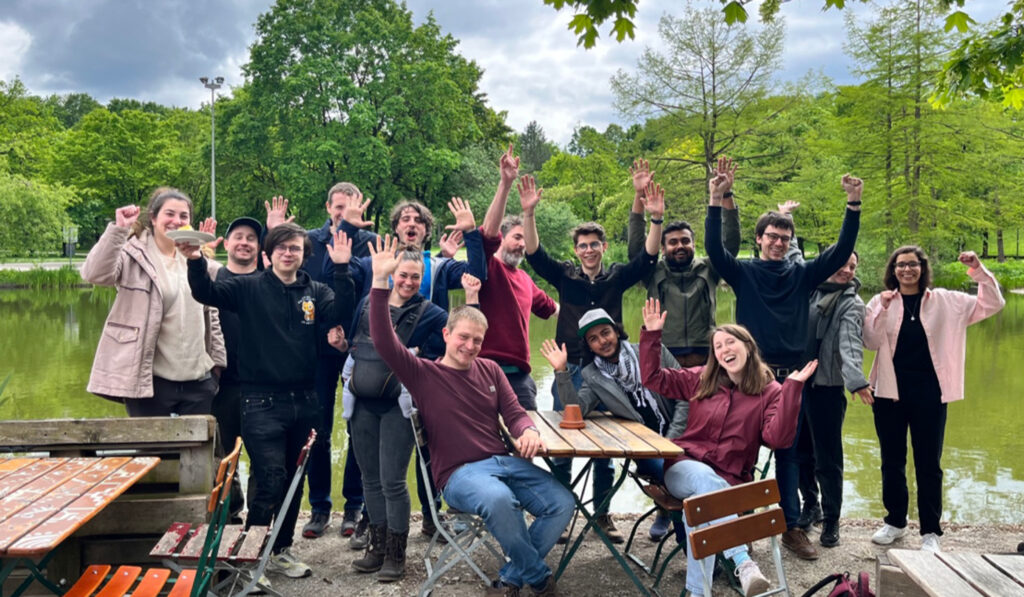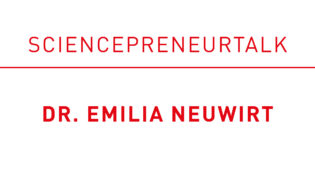
Turning an Idea into a Business
How Jonathan Noé went from PhD to Entrepreneur
Written by
From the world of nanophotonics and quantum optics to the fast-paced environment of a high-tech startup—Jonathan Noé has taken an unusual path. Trained as a physicist in Munich, he co-founded Qlibri, a company that builds cutting-edge optical tools for research labs. In this interview, Noé shares how he transitioned from academia to sciencepreneurship, what he learned about leadership and diversity, and why founding a company sometimes feels less like science and more like improvisational theatre—with a lot of problem-solving in between.
Jonathan, let’s start with your background. What led you into science, and eventually, into quantum optics?
I studied physics in Munich for my bachelor’s and master’s degrees. During my master’s, I specialized in nanophotonics, looking at how light interacts with tiny structures at ultra-low temperatures. That naturally led me to a PhD in the same field, where I also began collaborating with a colleague working in quantum optics. That collaboration planted the first seed for what later became Qlibri.
Was physics always your first choice?
Not exactly. In high school, I was torn between physics and acting. I enjoyed both, but ultimately chose physics because it felt like the safer option. Acting is risky and unpredictable, while physics promised a more stable path—and still offered plenty of intellectual adventure. I didn’t expect it to be quite so exciting, though. Quantum physics especially opened a world I couldn’t have imagined. It made me realize that reality is far stranger than fiction.
What made you decide to leave academia and start a company?
I knew pretty early on that I didn’t want to stay in academia. The path to professorship seemed narrow and full of sacrifices, and industry didn’t appeal to me much either—it sounded boring the way people described it. But near the end of my PhD, I started talking with my future co-founder, and we clicked. We didn’t have a startup idea right away, but we were curious and excited about building something together. At one point, we even brainstormed over beers about stratospheric balloon energy and ocean-based hydrogen plants— these ideas already existed and were not too realistic. But that process brought us back to something more grounded: a platform based on the quantum optics work my co-founder had done during his PhD. And we knew from conversations with professors that if we built it, people would be interested.
How did your scientific skills translate to entrepreneurship?
In many ways, we had to unlearn a few things. In research, you focus on depth and complexity. But running a startup is often about dealing with simple but urgent problems. You shift from solving theoretical puzzles to building actual products that people can use. That mindset change was huge.
You participated in the “Young Entrepreneurs in Science” program. How did it shape your entrepreneurial thinking?
We already had momentum when we joined, but the program helped a lot. It wasn’t just business theory—it was practical and very hands-on. One thing that really stayed with us was visual planning using Post-its. We still do that today when mapping out goals, with input from everyone in the team. That kind of bottom-up planning was a complete shift from the top-down logic of academia.
What were the biggest challenges early on?
The biggest challenge, especially in the early days, was definitely learning how to prioritize. In research, you’re often deep in complex problems that seem urgent and important, but in business, sometimes the most pressing issue is something incredibly basic—like a missing cable or an interface that doesn’t fit properly. It took a while to shift from the academic mindset, where the focus is on solving theoretical problems, to the more practical, product-driven mindset needed in a startup. Suddenly, we were thinking less about complex equations and more about customer needs, market fit, and logistics.
Team dynamics were another hurdle. We all came from academia, so adjusting to the fast-paced, flexible environment of a startup was a learning process for everyone. We had to quickly adapt to making rapid decisions and collaborating in a way that was very different from what we were used to.
Fundraising was also a challenge, but we were fortunate to be in Germany, where the deep-tech startup ecosystem was supportive. Our academic network played a key role in helping us connect with the right people and secure the initial funding we needed.

Tell us about Qlibri—what does the company actually do?
Qlibri specializes in building precision optical tools that are designed for cutting-edge research in fields like quantum optics and nanophotonics. Our main product focuses on microresonators, which are small optical devices that can trap light between two mirrors. These devices play a key role in various scientific applications, from quantum computing to sensing technologies, by allowing researchers to manipulate light with high precision in a quantum mechanical way.
Interestingly, the “Q” in Qlibri doesn’t actually stand for “quantum”—even though it’s often associated with quantum technologies. It refers to the Q-factor, a key parameter that defines the performance of our microresonators. The Q-factor essentially measures how efficiently the resonator can store light, which is crucial for enhancing the sensitivity and functionality of our tools. So while our work is deeply connected to quantum optics, the name reflects the core physics that powers our devices. But if people want to associate it with quantum, that’s totally fine—it’s a nice fit either way.
And how did you turn that scientific idea into a business?
We started with a very familiar model: selling high-tech tools to researchers. It’s common in physics—every lab needs instruments. What makes us unique is the technology behind it. Our tools are more compact, efficient, and user-friendly than building own instruments, that was the only possible way before. At first, we didn’t even have a ready product—we just built a website, showed early prototypes at conferences, and asked for feedback. That approach helped us validate our direction before investing too much.
What surprised you most during the journey?
How much we didn’t know about inclusion and diversity. Tech, and especially physics, is still very male-dominated. We realized that even small things—like the wording in job ads—can make people feel excluded. We took courses, reworked our approach, and saw big changes. Diversity isn’t just the right thing to do—it’s better for the team and the product. Different perspectives lead to better ideas.

How has a diverse team changed the way you work?
It’s made everything more enjoyable and more dynamic. We have people from different cultural and academic backgrounds, and that mix fosters creativity. We can’t compete with big corporate salaries, but we offer something else: a culture where people feel comfortable, respected, and heard. That makes a huge difference.
Is research still part of your daily work at Qlibri?
Very much so. Our customers are scientists, so we need to speak their language. Many of us have PhDs, including our sales team, so we can discuss complex setups in detail. We’re not publishing academic papers anymore, but we’re still doing cutting-edge research—only now it’s applied. We build tools that push technological limits and solve real problems in labs across the world.
Looking back, any regrets about leaving academia?
None! There are moments of doubt, sure—every founder wonders how the company will develop in the next years. But I never regretted stepping away from academia. It felt like the natural next step. And I’d never do this alone—having co-founders has been absolutely essential.
What happens next?
Check out our event calendar for upcoming workshops. Stay tuned for more updates, opportunities, and success stories!
Connect with Jonathan Noé via LinkedIn!
Interviewer & Editor, Design: Bianca Cramer






